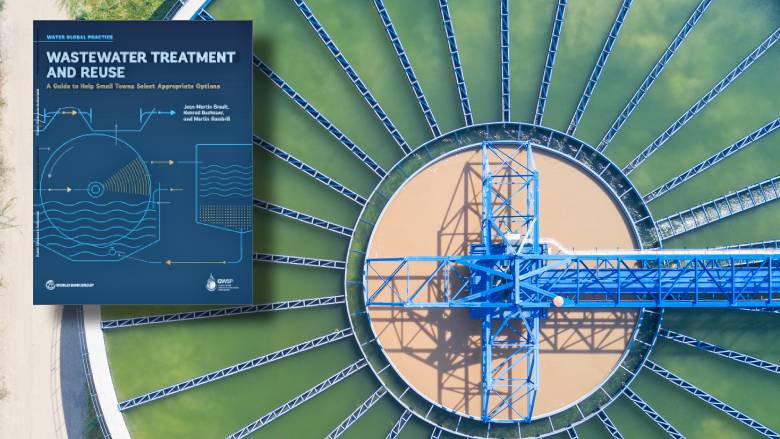Enhanced Waste Water Treatment Solutions for Sustainable Water Management
Enhanced Waste Water Treatment Solutions for Sustainable Water Management
Blog Article
Strategic Approaches to Enhance Drainage Treatment Performance and Reduce Environmental Influence
In the realm of waste water treatment, the pursuit for improved effectiveness and minimized ecological impact is a perpetual challenge that requires critical remedies. As society grapples with the imperative to take care of water resources sustainably, a nuanced technique comes to be essential. The combination of sophisticated treatment innovations, energy-efficient processes, resource healing methods, enhanced nutrient removal techniques, and smart monitoring and control systems represents a multifaceted framework for addressing these pressing concerns. Nonetheless, what exists at the core of this facility internet of methods is the prospective to transform the way we approach drainage therapy, not simply as a process of disposal, but as a valuable opportunity for technology and ecological stewardship.
Advanced Treatment Technologies
Cutting-edge membrane filtration systems have transformed sophisticated wastewater treatment procedures, dramatically boosting the elimination of impurities. This technology has proven to be very effective in eliminating a vast range of contaminants, including pharmaceuticals, hefty steels, and natural compounds, which are commonly challenging to get rid of with conventional treatment methods.
Moreover, membrane purification systems offer various advantages over traditional treatment techniques. Furthermore, these systems are very flexible and can be easily incorporated right into existing therapy plants or used as standalone units for decentralized applications.
Energy-Efficient Procedures
The assimilation of energy-efficient processes in wastewater therapy systems is vital for optimizing source use and decreasing operational prices. One vital approach to improving energy effectiveness in wastewater treatment is the utilization of advanced aeration systems, such as fine bubble diffusers or surface aerators, which can enhance oxygen transfer performance and decrease energy usage.
Additionally, optimizing procedure control and automation via the usage of innovative sensors and monitoring systems can boost general energy performance by adjusting procedures in real-time based upon real need and conditions. Executing energy audits and consistently monitoring energy performance indications are necessary methods to determine areas for renovation and track energy-saving efforts effectively. On the whole, the adoption of energy-efficient procedures in wastewater treatment not just benefits the environment yet additionally contributes to long-lasting expense savings and functional sustainability.
Source Recuperation Strategies
With an emphasis on optimizing source application and sustainability in wastewater treatment systems, the execution of source recovery strategies arises as an essential facet in boosting functional performance. Source recovery methods in wastewater treatment involve the recognition and removal of useful sources from the waste stream, consequently transforming what was when considered waste into a useful asset. By executing source recuperation techniques such as nutrient elimination and recuperation, power generation from raw material, and the production of recyclable water, wastewater treatment plants can decrease environmental impact while optimizing effectiveness.

Improved Nutrient Elimination Techniques
Applying advanced nutrient removal techniques is crucial for enhancing the performance of wastewater therapy systems. Enhanced nutrient removal plays a critical role in reducing the environmental effect of cured effluent released right into water bodies. Among the key strategies used for boosted nutrient elimination is the procedure of organic nutrient removal (BNR), which involves internet the removal of nitrogen and phosphorus through organic procedures. This can be achieved with making use of specialized microorganisms that can convert nitrogen substances into inert nitrogen gas via denitrification, and accumulate phosphorus within their cells through a procedure called enhanced organic phosphorus elimination (EBPR)

Along with BNR, advanced therapy techniques such as membrane layer bioreactors (MBRs) and created marshes can likewise be employed to boost nutrient elimination effectiveness. MBRs utilize membrane layers to accomplish top notch effluent requirements by properly removing nutrients and put on hold solids. Constructed wetlands imitate natural marsh processes to get rid of nutrients via plant uptake, microbial task, and sedimentation. By including these innovative nutrient removal strategies into wastewater therapy markets, municipalities and systems can successfully minimize nutrient pollution and secure the atmosphere.
Smart Tracking and Control Solution
Using innovative modern technology, the assimilation of smart monitoring and control systems revolutionizes the operational efficiency of wastewater treatment facilities. These systems integrate sophisticated sensors and data analytics to constantly monitor YOURURL.com vital criteria such as pH levels, turbidity, dissolved oxygen, and circulation prices in real-time. By accumulating and evaluating this data, operators can get beneficial insights right into the efficiency of the therapy procedures, allowing aggressive changes to enhance treatment performance.
Smart monitoring and control systems additionally support remote monitoring capabilities, permitting drivers to gain access to real-time data and control features from off-site areas. This remote accessibility enhances functional versatility and responsiveness, allowing speedy interventions in situation of system malfunctions or changes in influent high quality. The predictive upkeep capabilities of these systems help prevent equipment failures and lessen downtime, inevitably improving the general integrity of wastewater therapy operations.
Final Thought
To conclude, strategic methods such as innovative therapy innovations, energy-efficient procedures, resource recuperation methods, boosted nutrient elimination strategies, and clever monitoring and control systems play a vital function in enhancing wastewater treatment efficiency and lessening ecological influence. By applying these strategies, wastewater therapy plants can boost their overall performance, reduce energy consumption, recover valuable resources, and ensure conformity with ecological policies. These techniques are necessary for lasting and reliable wastewater administration methods.

In conclusion, calculated techniques such as sophisticated treatment innovations, energy-efficient processes, source recovery approaches, improved nutrient elimination techniques, and clever surveillance and control systems play a critical duty in boosting wastewater treatment performance and decreasing environmental effect.
Report this page